Junkyard Gem: 1975 Mercedes-Benz 240D
How underpowered must a vehicle be to be considered intolerable to drive? The only new car Americans can buy with two-digit horsepower right now is the 78-horse Mitsubishi Mirage, widely considered to be miserably slow, but today's 62-horsepower Junkyard Gem was much, much more sluggish than that car. It was also one of the most reliable motor vehicles ever built, period, and its long career ended during the winter in a snowy Colorado car graveyard.

This is a W114 (technically a W115 thanks to its four-cylinder engine, but most people apply the W114 designation to both types nowadays) proto-E-Class, the immediate predecessor to the legendary W123. The W114/W115 was built from 1968 through 1976 and sold well in North America.

No other major car manufacturer could match Mercedes-Benz in build quality during the middle 1970s, except perhaps Toyota with its Century (which was handbuilt in tiny quantities with Emperor Hirohito as its target customer).

With gasoline shortages and ever-higher fuel prices in the wake of the OPEC oil embargo of late 1973, a well-built sedan that got excellent fuel economy on cheap and reasonably easy-to-find diesel seemed like a smart long-term purchase for American car shoppers with sufficient funds. The engine in the U.S.-market 1975 240 D was a 2.4-liter inline-four SOHC oil-burner rated at 62 horsepower and 97 pound-feet.

That gave this 3,205-pound car a power-to-weight ratio of 51.7 pounds per horsepower, which makes the 2024 Mirage with its 28 pounds per horse accelerate like a Saturn V rocket by comparison. Back in 1982, I took my driver-training instruction in a 48-horsepower 1979 Volkswagen Rabbit Diesel, which I considered terrifyingly slow even by Late Malaise Era standards, and it boasted a mighty 40.7 pounds per horsepower (yes, diesel torque helps, but nowhere near enough). In 1982 and 1983, the power-to-weight nadir of U.S.-market vehicles during the modern era appears to have been achieved by the Volkswagen Vanagon Diesel, each horsepower of which had to drag an awe-inspiring 67.3 pounds.
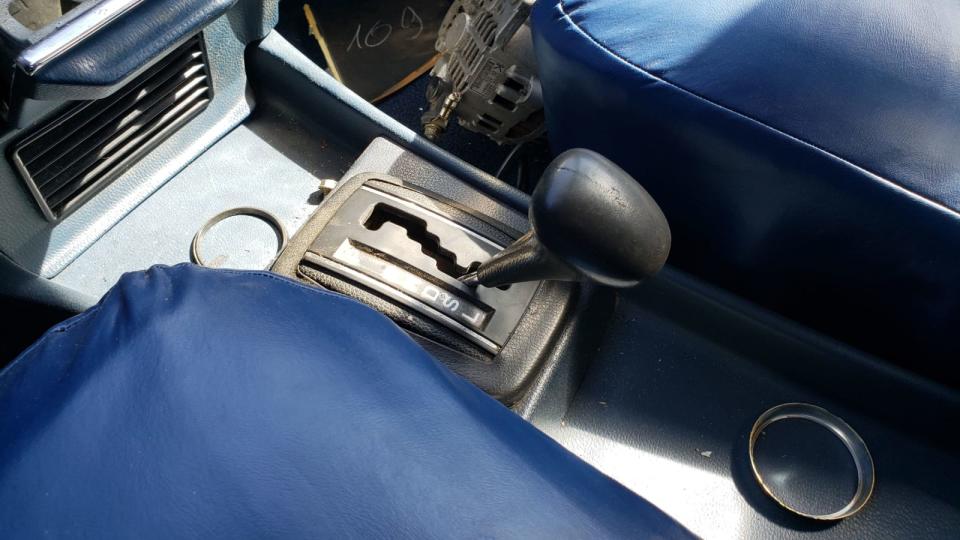
The U.S.-market 1975 240 D was available with a four-speed manual transmission, but the original buyer of this one bought the four-speed automatic instead.
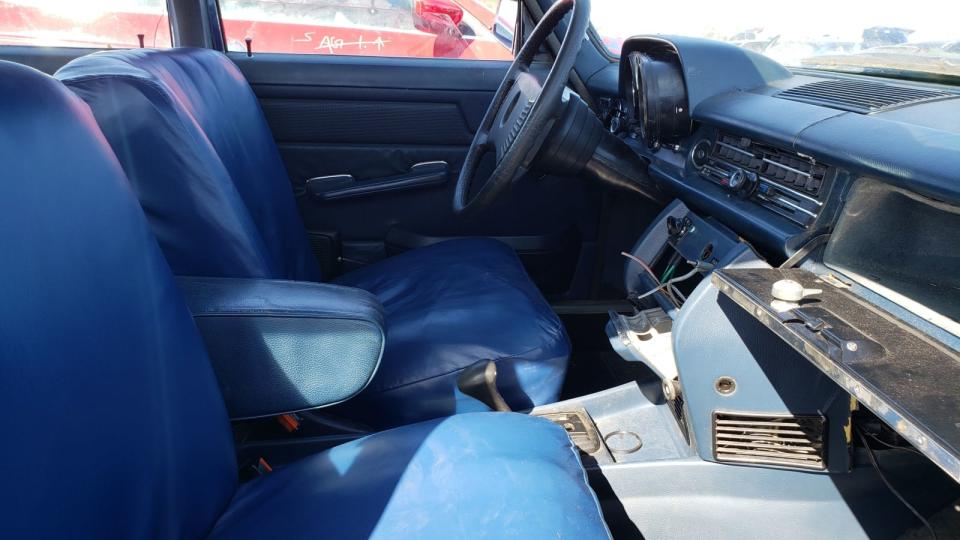
Yes, it was extremely slow. So what? These cars rode nicely and rarely suffered from mechanical woes.
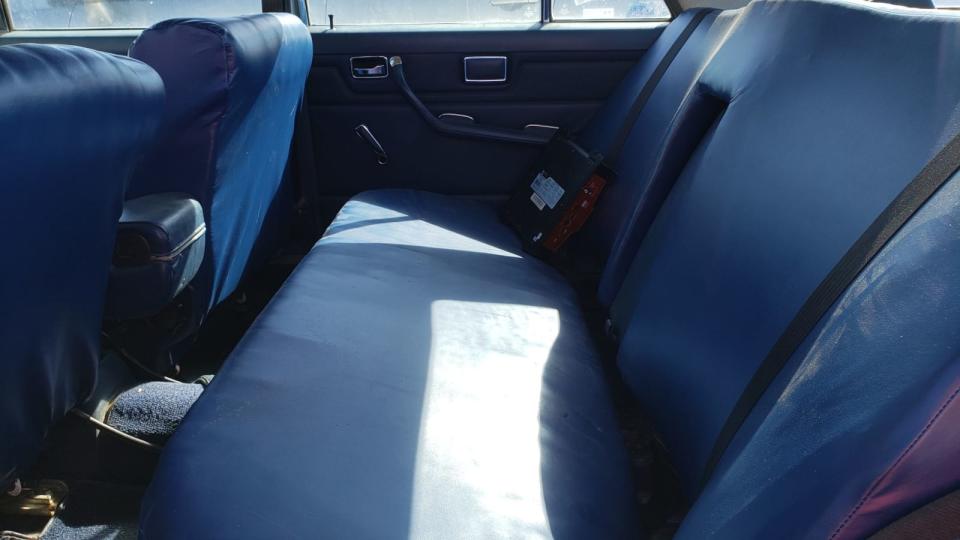
The MSRP for this car with automatic transmission and air conditioning (which it has) would have been $10,257, or about $61,729 in 2024 dollars, which is not so far away from current E-Class prices. Meanwhile, a brand-new 1975 Cadillac Sedan DeVille with a 500-cubic-inch (8.3-liter) V8 listed at a mere $8,601 ($51,763 after inflation). The Cadillac was bigger, more comfortable, more powerful… and a lot thirstier than the 240 D.
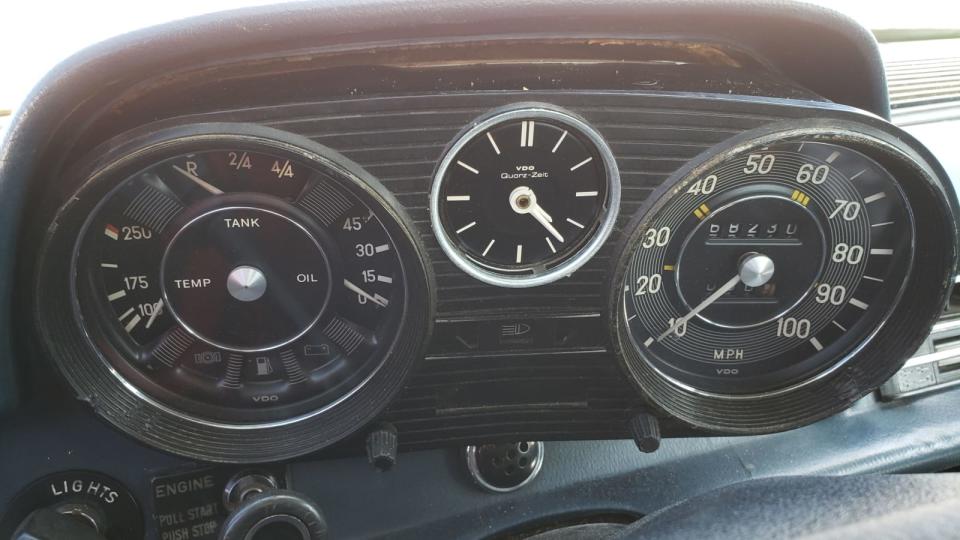
Unfortunately, Mercedes-Benz hadn't gotten around to installing six-digit odometers in the W114 by 1975, which means we can't know what its final mileage total was. I've found discarded diesel Mercedes-Benzes with well over a half-million miles showing, and this car might well have driven just as far during its life.
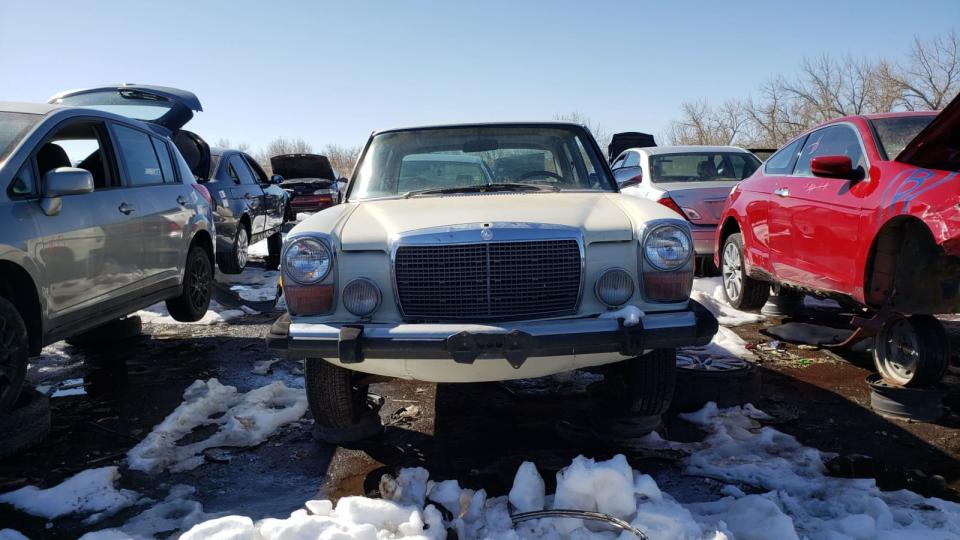
With so many of these cars still on the road, we can expect to find them in junkyards for decades to come.
You got what you paid for with the W114.
You Might Also Like




